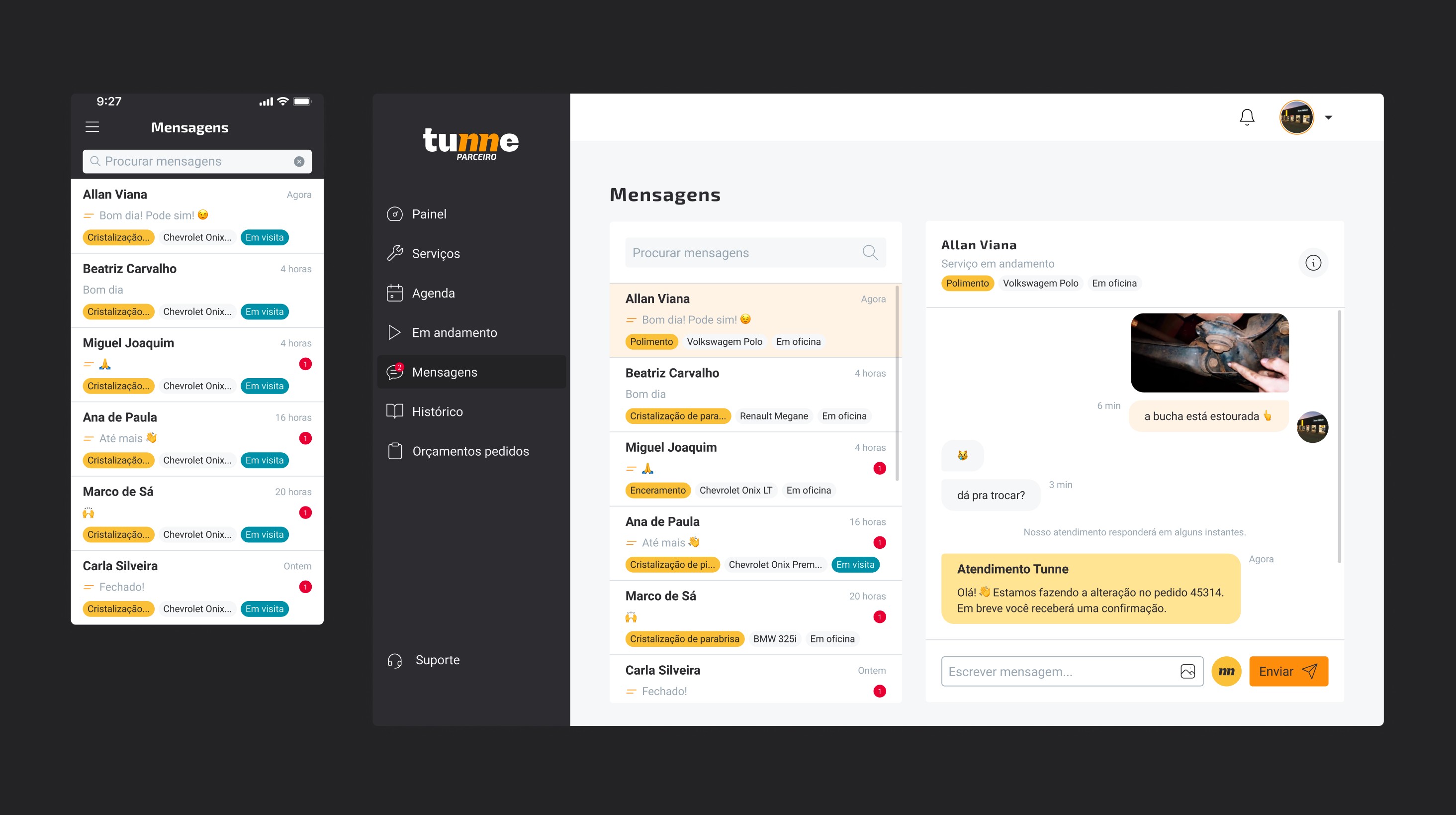Tunne - Auto Services Platform
Tunne is an auto services platform that connects drivers to certified shops. It helps drivers to find the best service according to their needs, and for the shops, they get more clients and access to a management system.

About the Project
Tunne is an auto services platform that connects drivers to certified shops. It helps drivers to find the best service according to their needs, and for the shops, they get more clients and access to a management system.
Tunne was just starting out, so the client came to us with just a rough idea on what the product should be, so we had to explore the business goes and understand the market and overall context.
To do so, we brought him close since the begging of the process, having sessions where we presented our findings and deliverables to help him make the decisions.
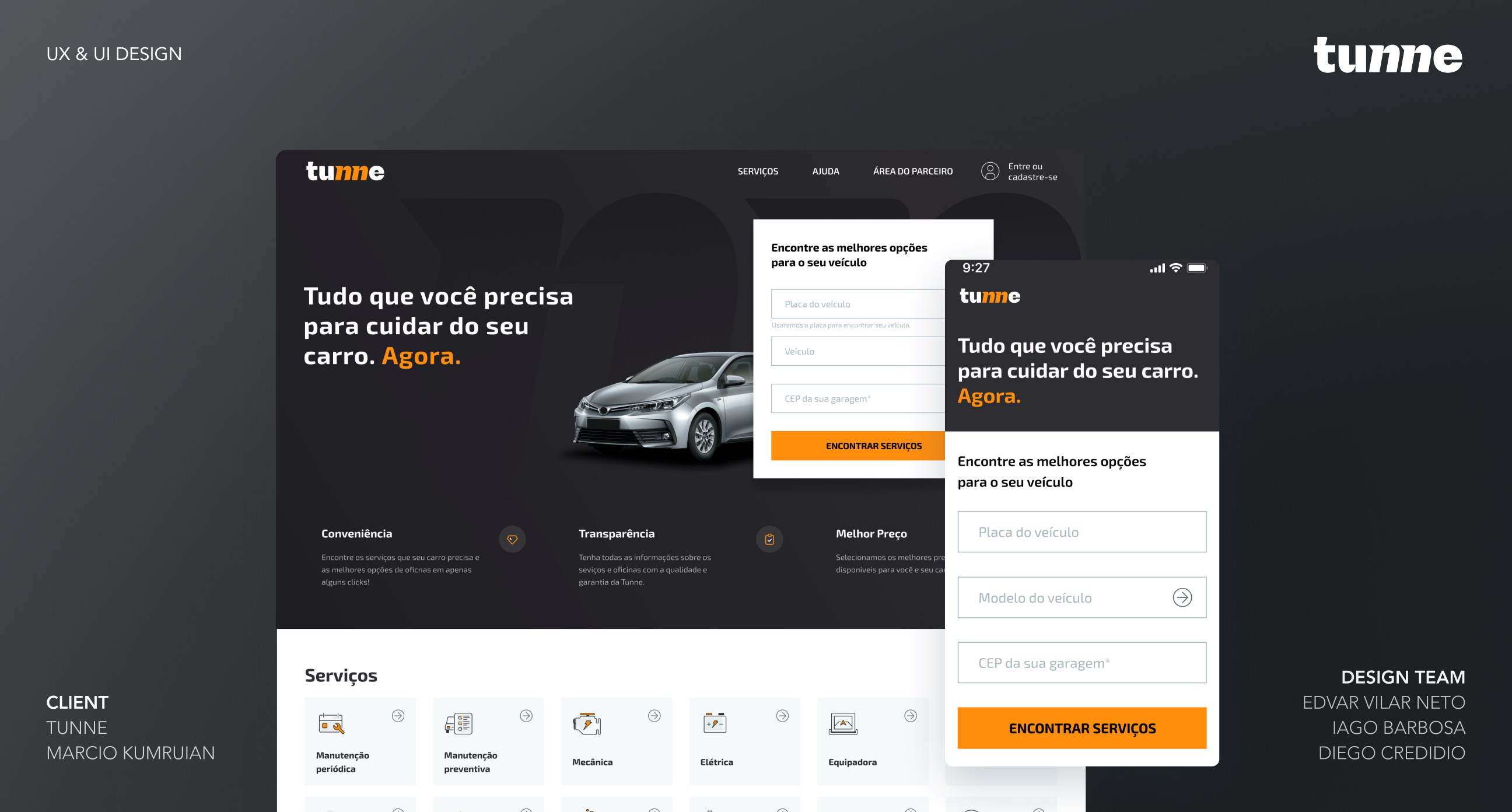
Research
After understanding the business goals, we started our research process to find out drivers' (End Users) needs and behaviors regarding cars and auto services. We went for both qualitative and quantitative research to get as much information as possible:
Qualitative Research: We created a script based on our assumptions and interviewed 10 drivers (male and female, from the 20s to 50s)
Quantitative Research: We created a survey to get data on the scale one specific needs and behaviors and what were the profiles (300 drivers answered).
We also interviewed car workshop owners since they would be partners on our solution. It gave us more technical knowledge on how the auto services ecosystem work
Main Findings
- We found the most used auto services and how often people request them
- App drivers (Uber, 99, etc) could be an interesting profile
- People don't find the car shops much reliable
- Most people like to take good care of their car, but they're not very knowledgeable
- The things people value the most regarding auto services:
Convenience: People want the shops to be near and provide all services needed as fast as possible
Price: Last but not least, people want good deals on high-quality services.
Transparency: People want the shops to be reliable and not push for unnecessary products or repairs
Tunne Driver
The user can find all auto services they need, provided by Tunne certified partners, and choose based on their preferences (price, availability, distance, rating, and so on).
- Look for the service needed
- Choose the best option (shop)
- Purchase and schedule service
- Drive to the shop or wait for the mechanic at a given address
- Follow progress and car status
- Pick up the car and rate service
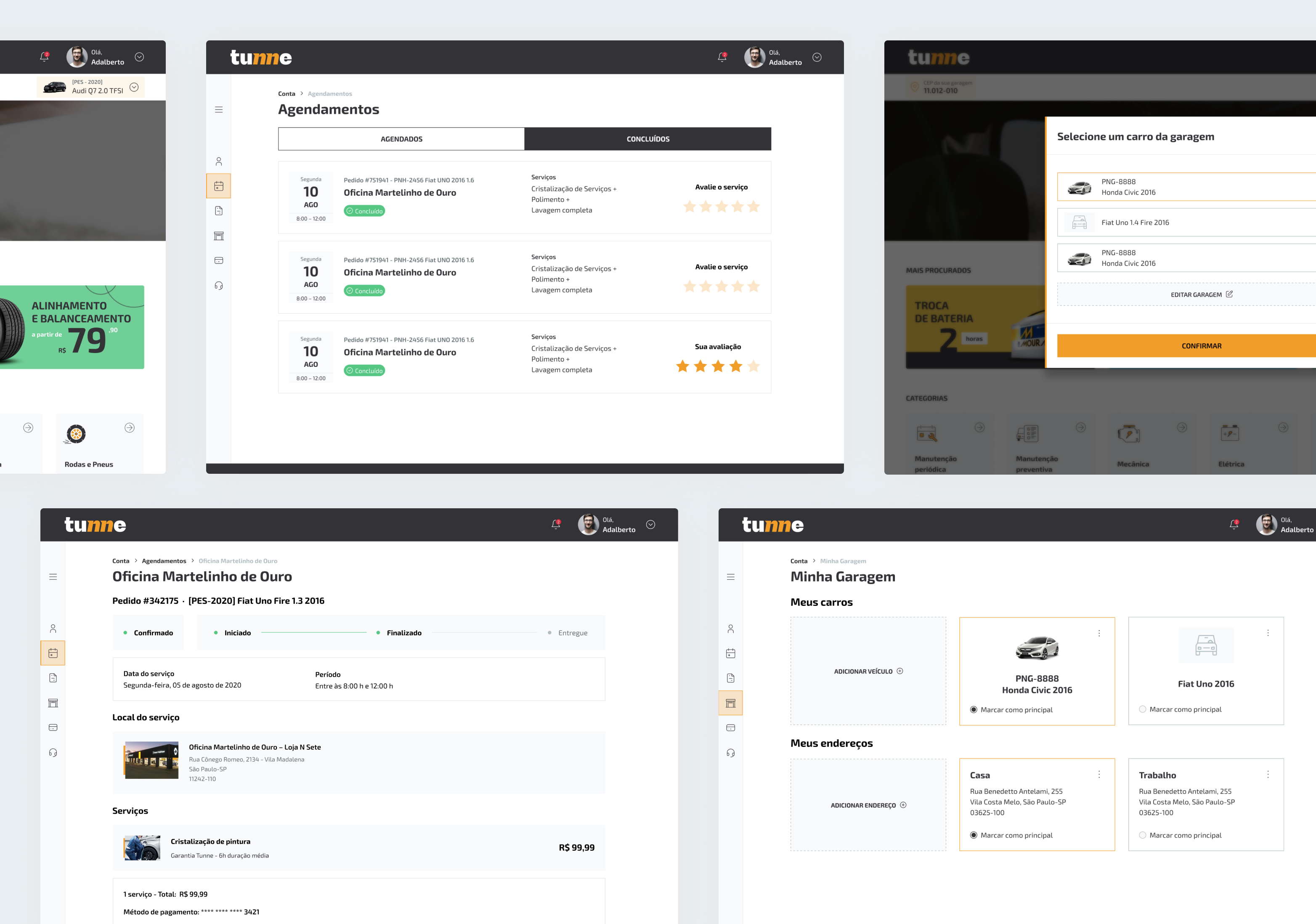
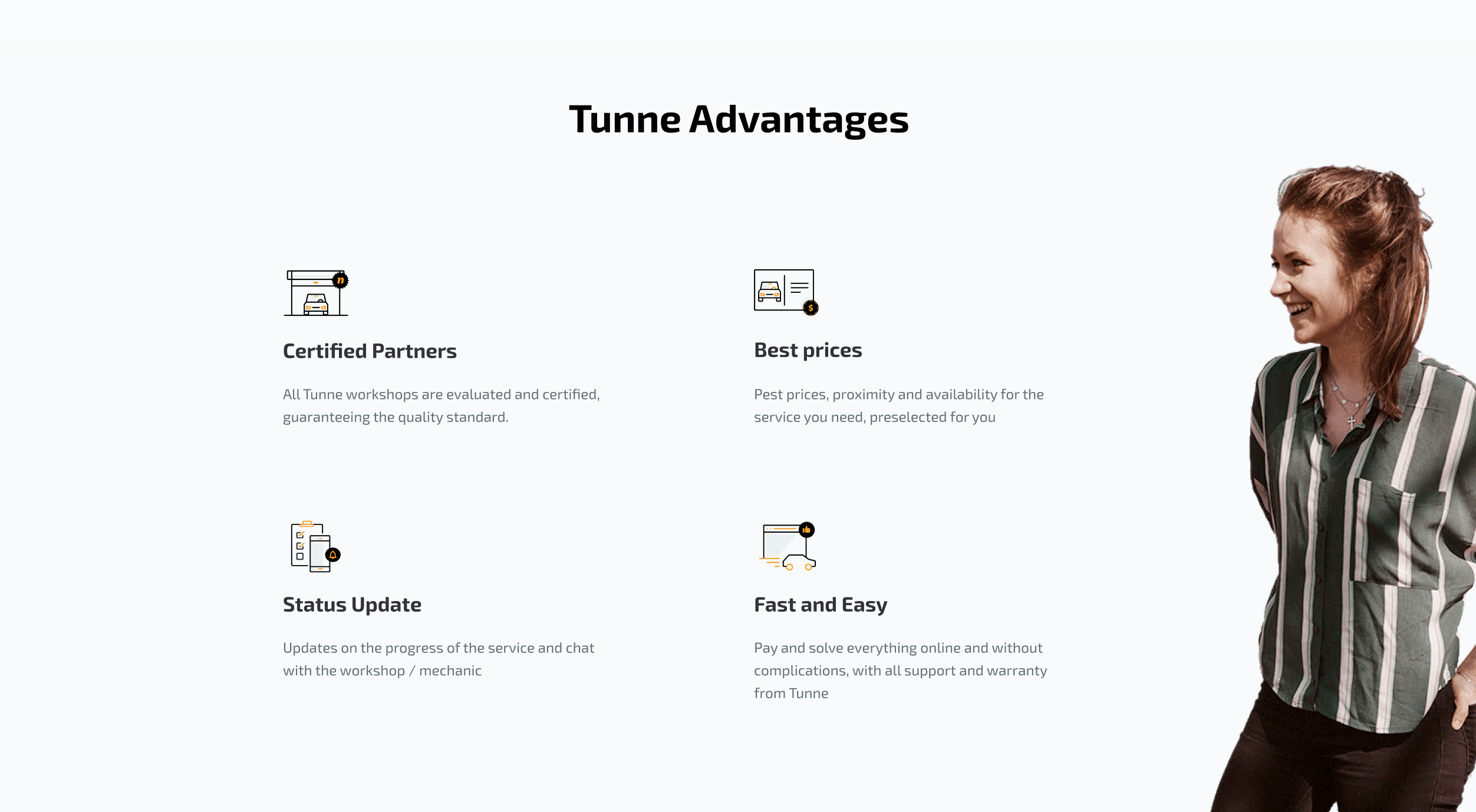
Services
Part of our goal in the research process was to understand how to structure our "service tree" to meet drivers' mental model regarding auto services. Since most people are not very knowledgeable, we had to make it easy for the user to find the service they need.
Categories: Services were divided into categories related to car parts and contexts, labeling them according to what most people mentioned in the research
Search: Search feature based on keywords, with autocomplete and recommendations, making sure users don't get lost
Recommendation: Overall and for each category, the most frequently requested services are highlighted on the screen
Descriptions: Every service has a brief description explaining the process and when it is needed
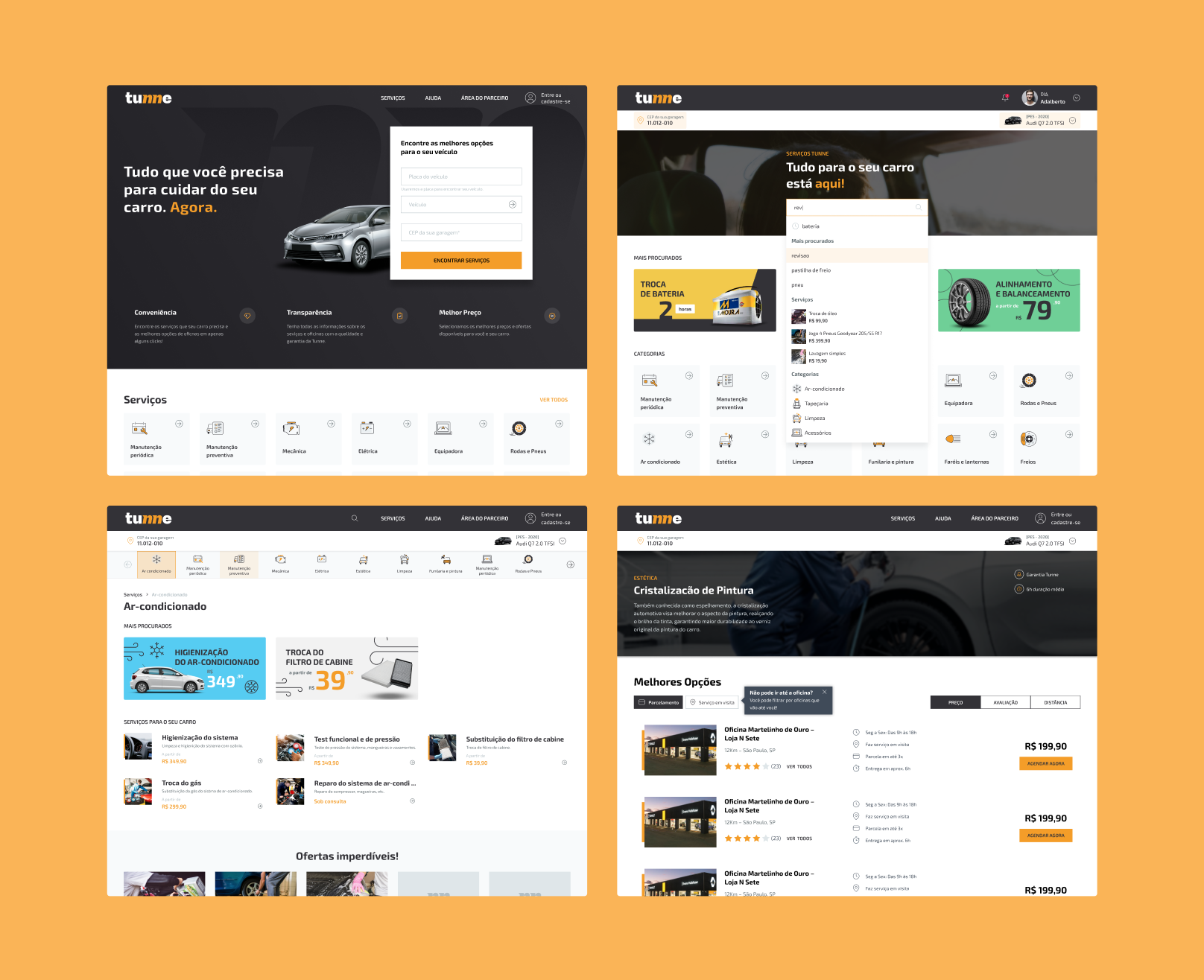
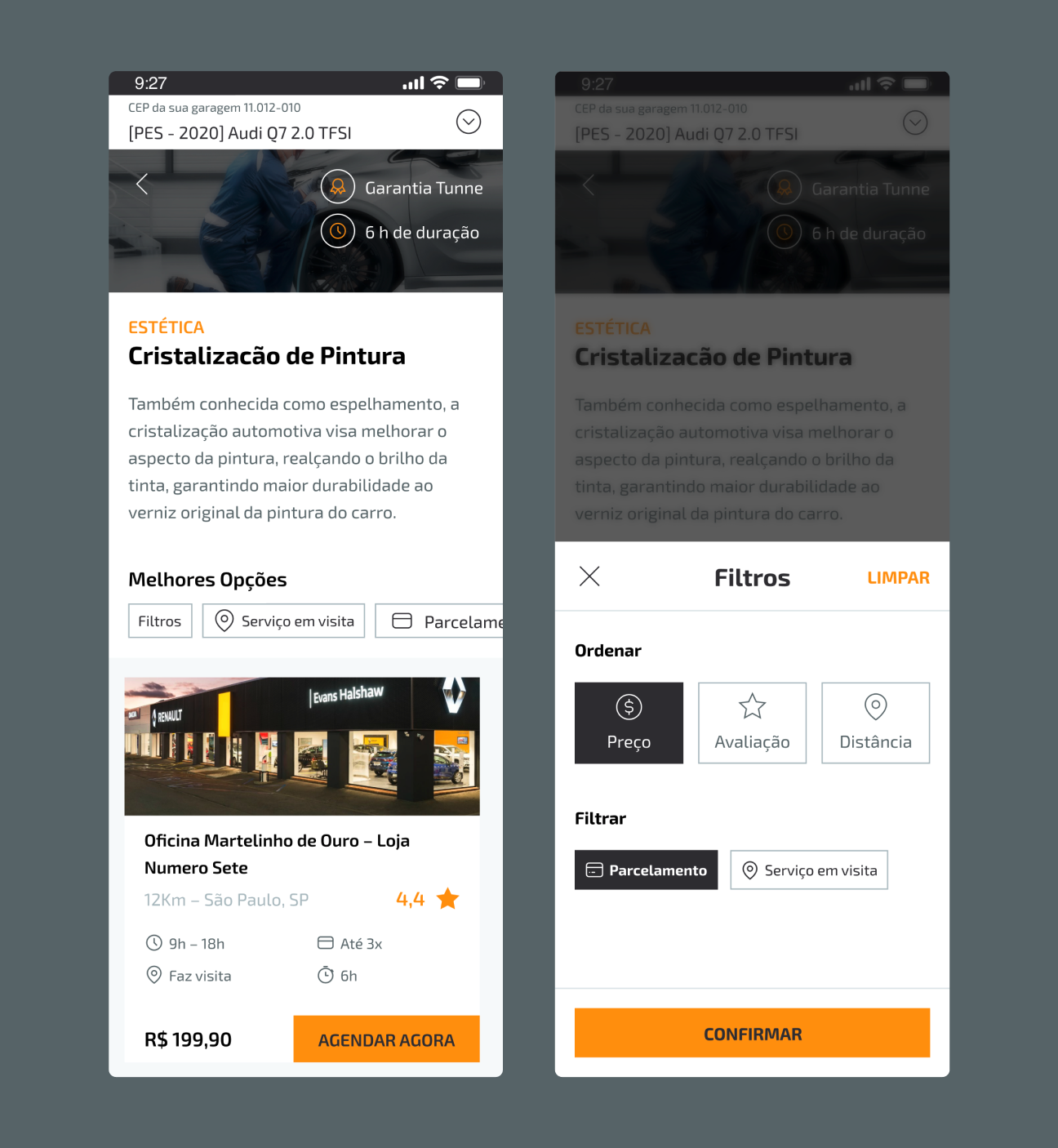
After selecting the service, the best shops (based on price/rating) are pre-selected, facilitating the user's decision reducing the number of choices. Nonetheless, it's possible to see all options and filter by:
- Price
- Rating
- Payment method
- Distance
- In-workshop/ at given location
Checkout and Scheduling
All steps and information are handled on the platform with frictionless checkout and scheduling, after selecting a date/time and the payment method is just waiting for the shop to accept the service. Users can track the service and get notifications and emails on order and car status.
The site is completely responsible and adapts the mobile context when needed, so users can have a seamless experience throughout devices.
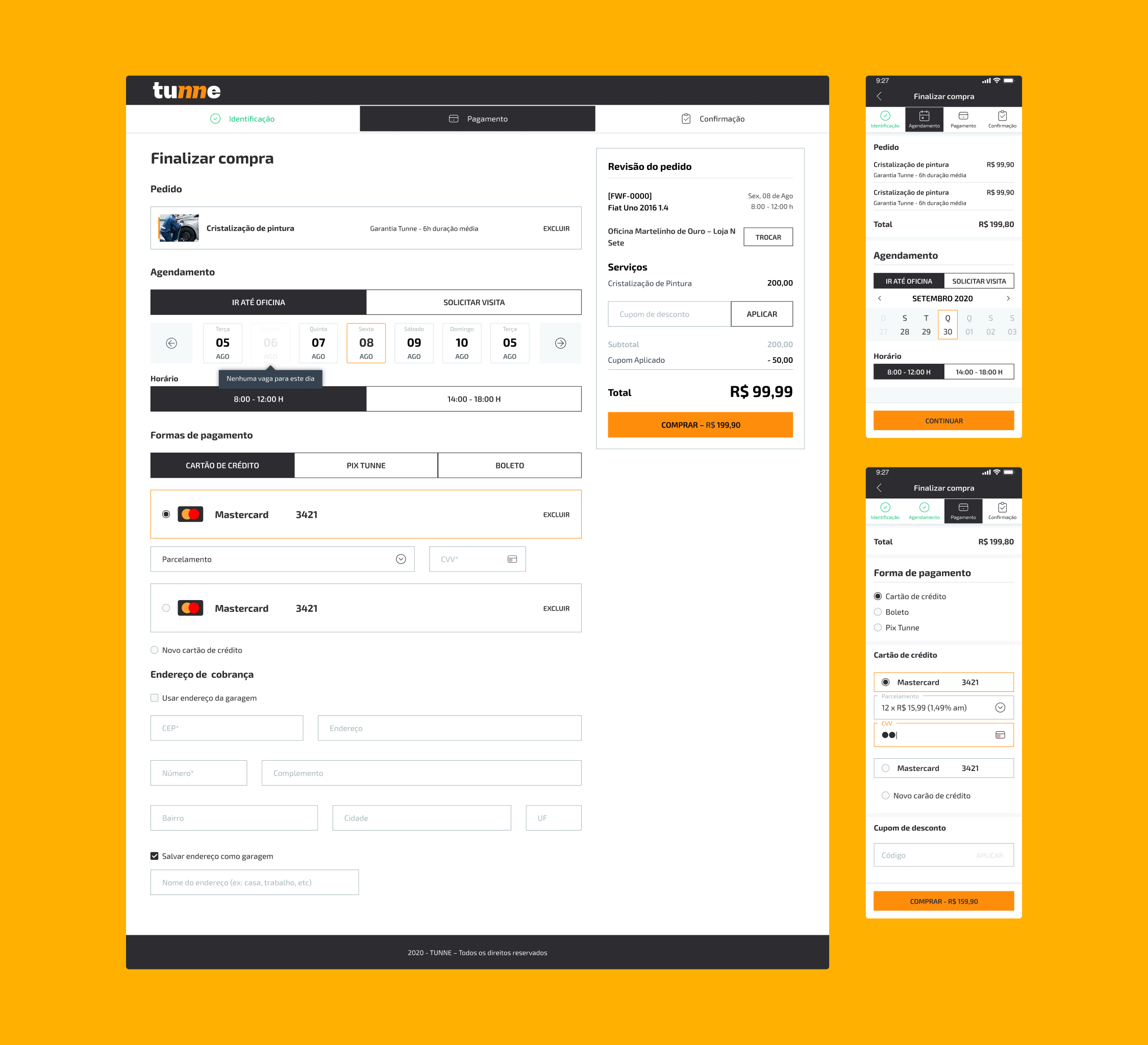
Status and Order History
In addition to having full visibility throughout the process of the requested services with the feedback of changing status on the ongoing services, the order history also allows you to monitor the "health" of the car knowing what is up to date and what is not.
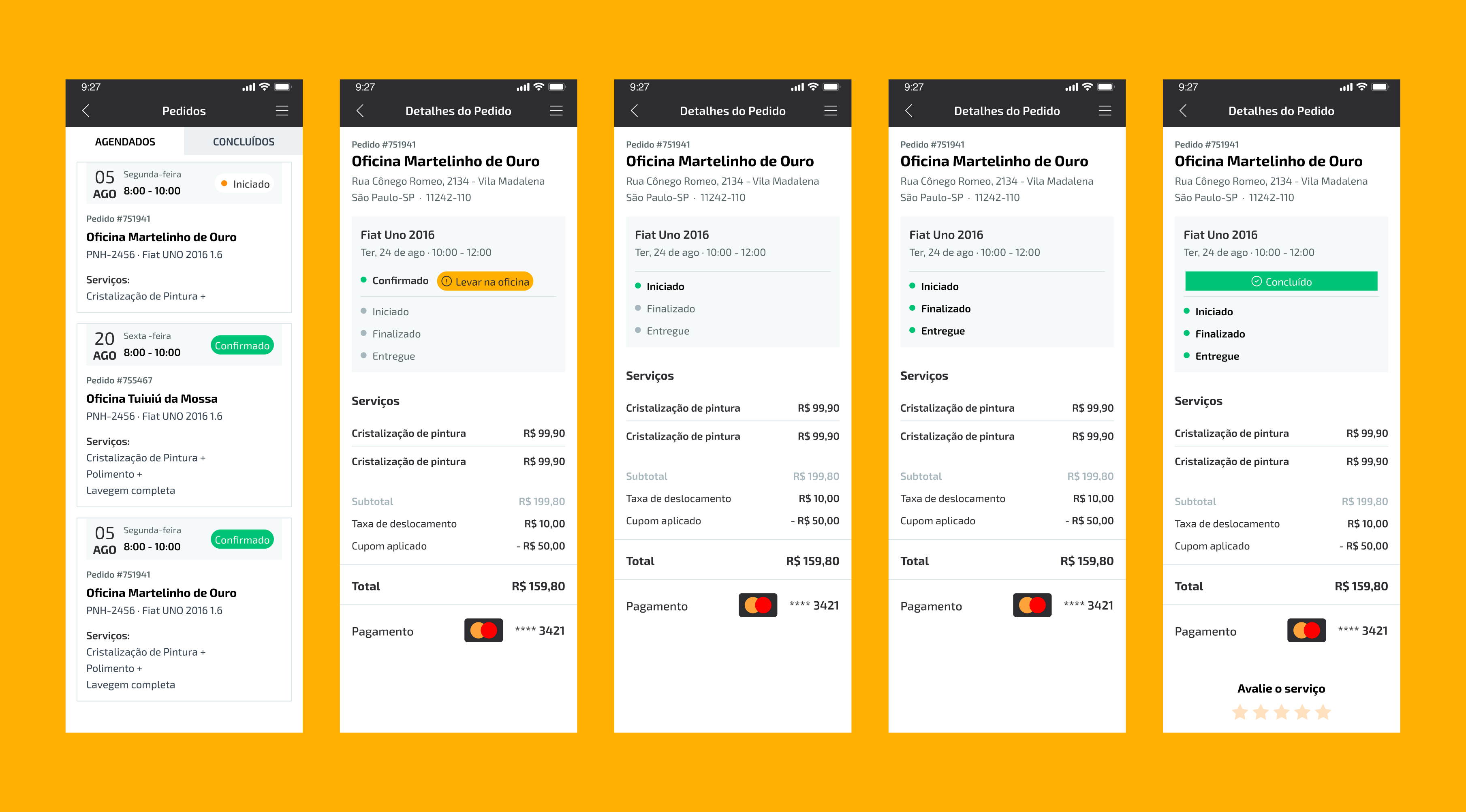
Profile and Garage
Drivers can manage all their information and add a car to their garage by just inputting its plate and all information will be automatically filled in. The same goes for the ZIP code and address.
It's possible to add as many vehicles and addresses as needed.
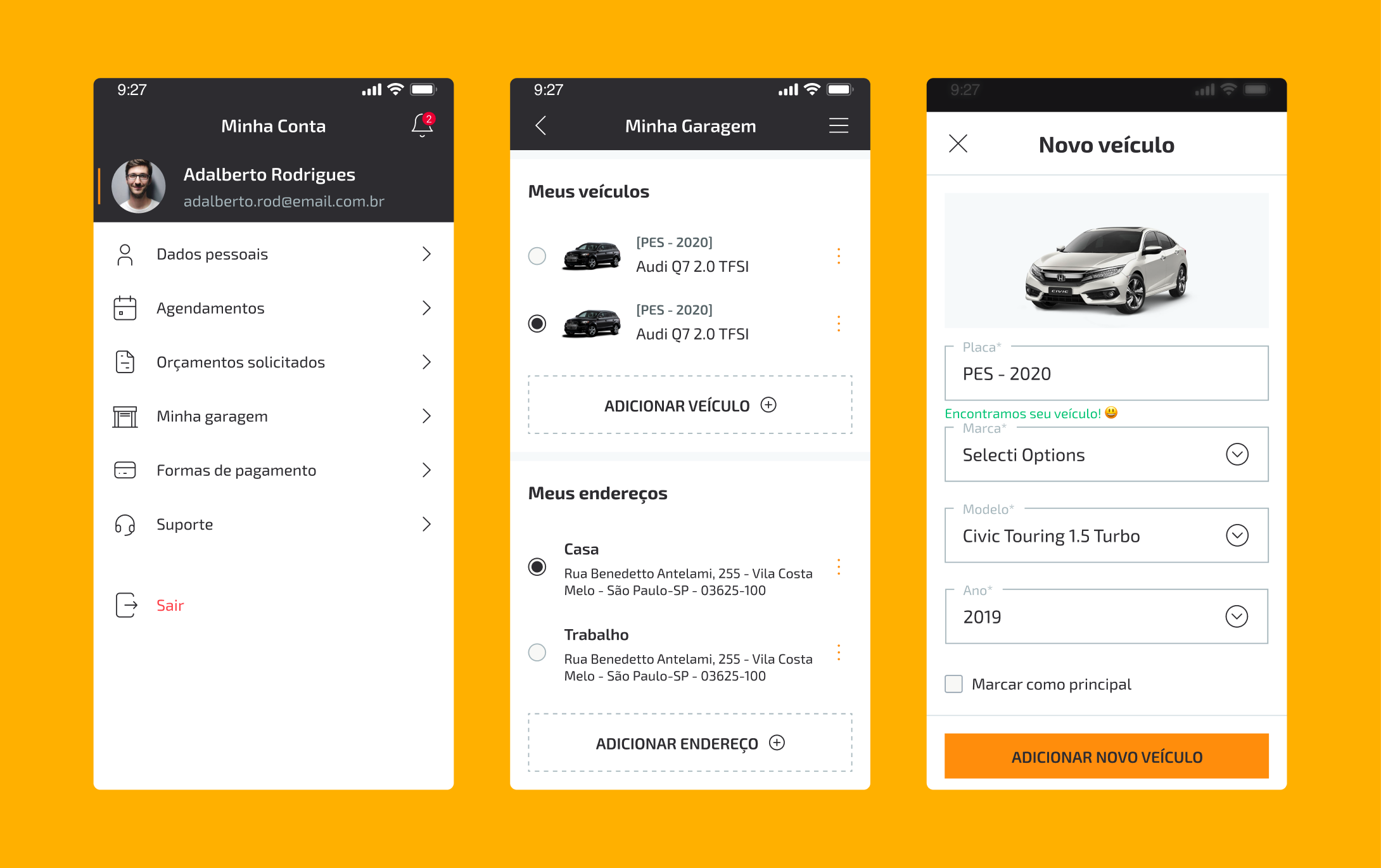
Design System
The design system was built based on Bootstrap framework components since it would be the technology used in the development phase.
We started documenting the components alongside the page layout creation. So for every page/flow delivered, we had the corresponding components with their variations and states.
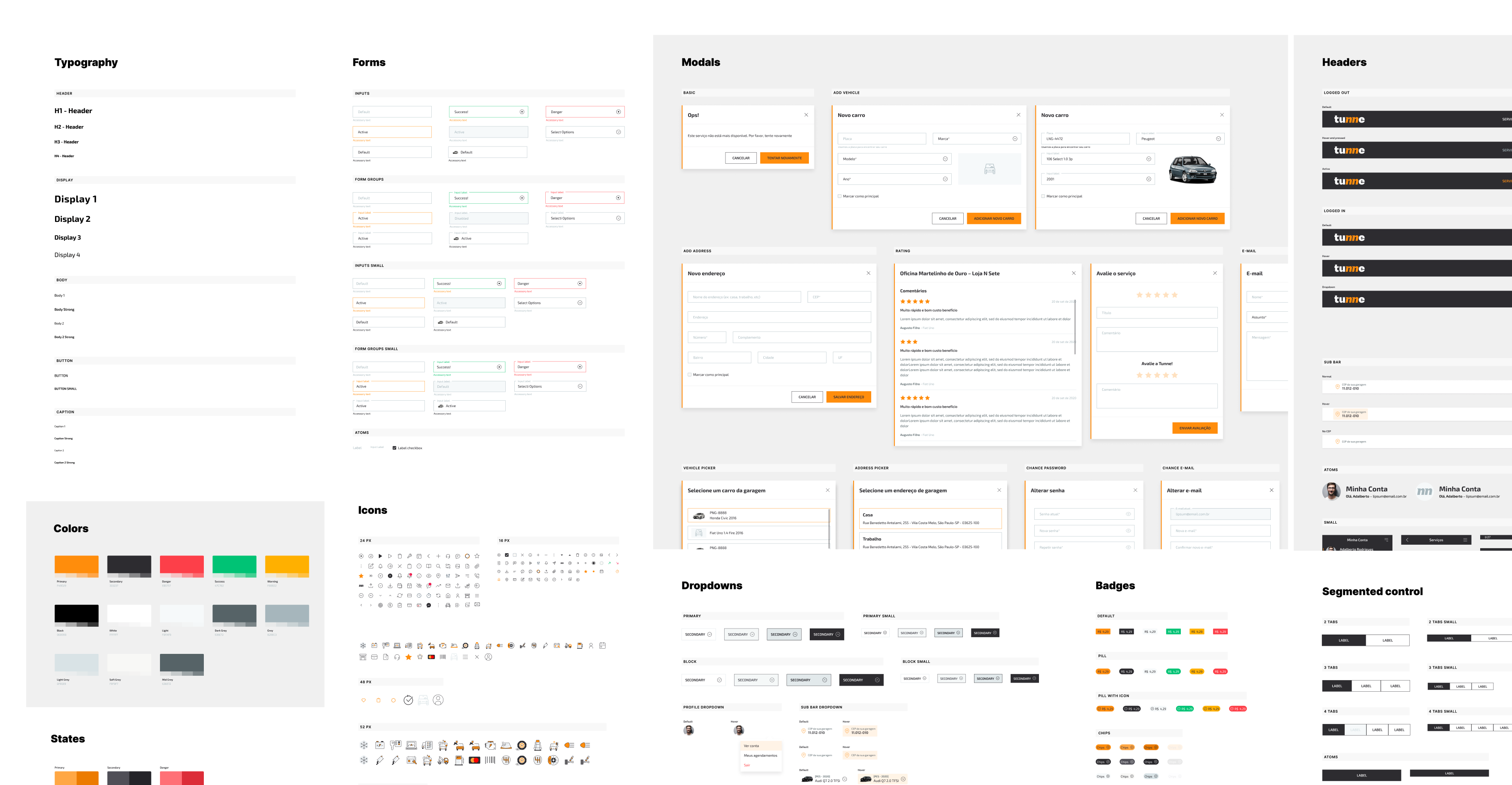
Tunne Partner
Help shops to get more visibility online, integrating a group of distinguished shops with Tunne's quality seal, attracting new customers.
After being certified by Tunne team, the partner gets a management system where they can input their info and services the will be presented to the drivers and manage the calendar, clients, services slots, etc.
- Register to be a partner
- Get verified by tunne
- Input info (services/prices, opening hours, location, etc)
- Accept clients requests
- Update car/service status
- Give car back
The profile page contains the shop information that will be shown on the Tunne Driver site, so drivers can choose.
A dashboard panel shows a summary and insights on how the business is doing.
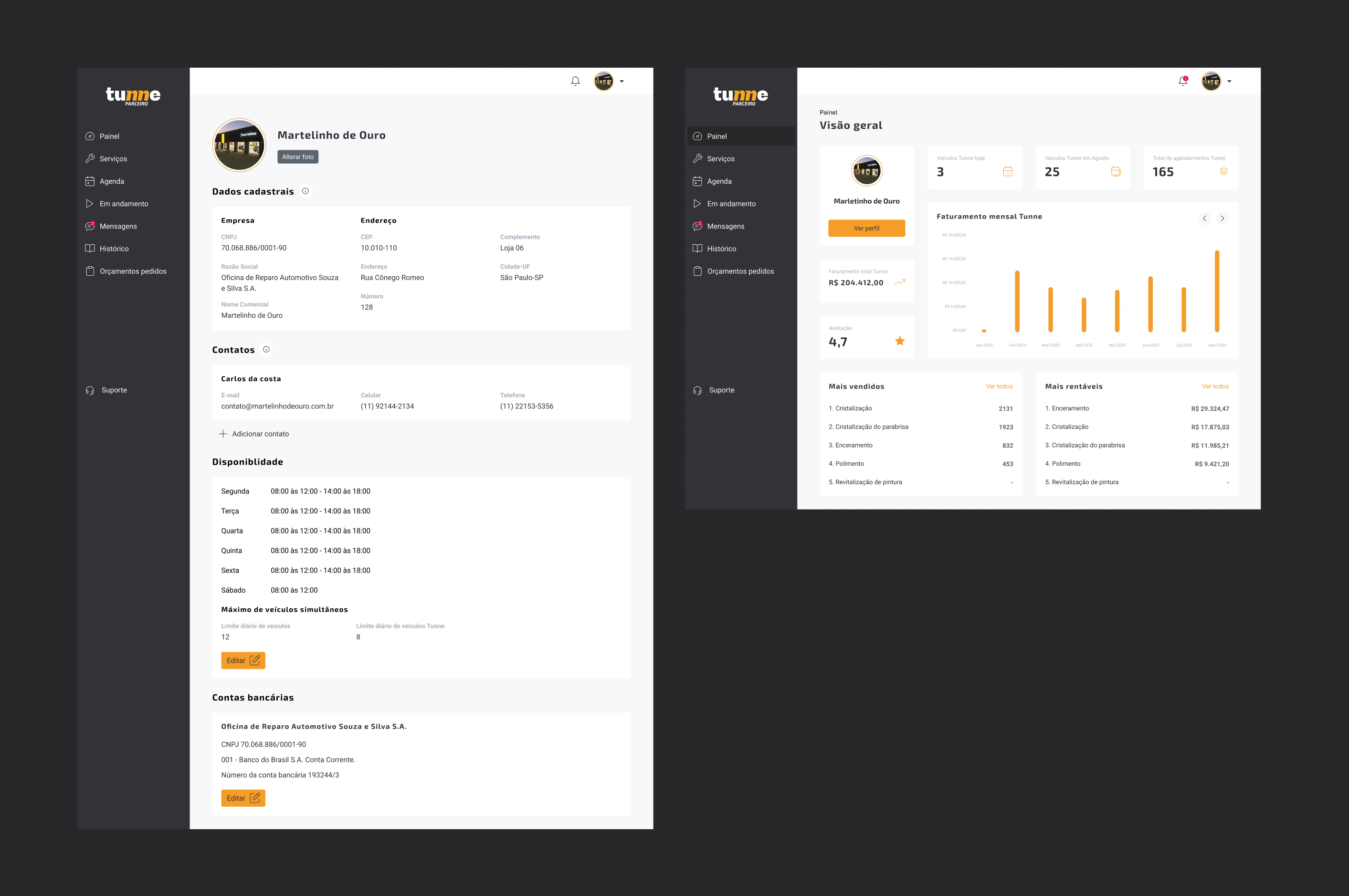
Service Schedule
All scheduled services are listed and available in two view modes: Day and Week agenda. On the list, the services are sorted by the scheduled time, with visual feedback on the ones that are delayed.
Workshop managers can keep track of all services in their calendars. Also, it is possible to start a chat with the client if needed and filter the list by specific services, vehicle, location (at workshop/ at customer's address) and, service status.
It's also possible to manually add external services (that didn't come through Tunne) having a unified schedule and avoiding possible time/slot conflicts
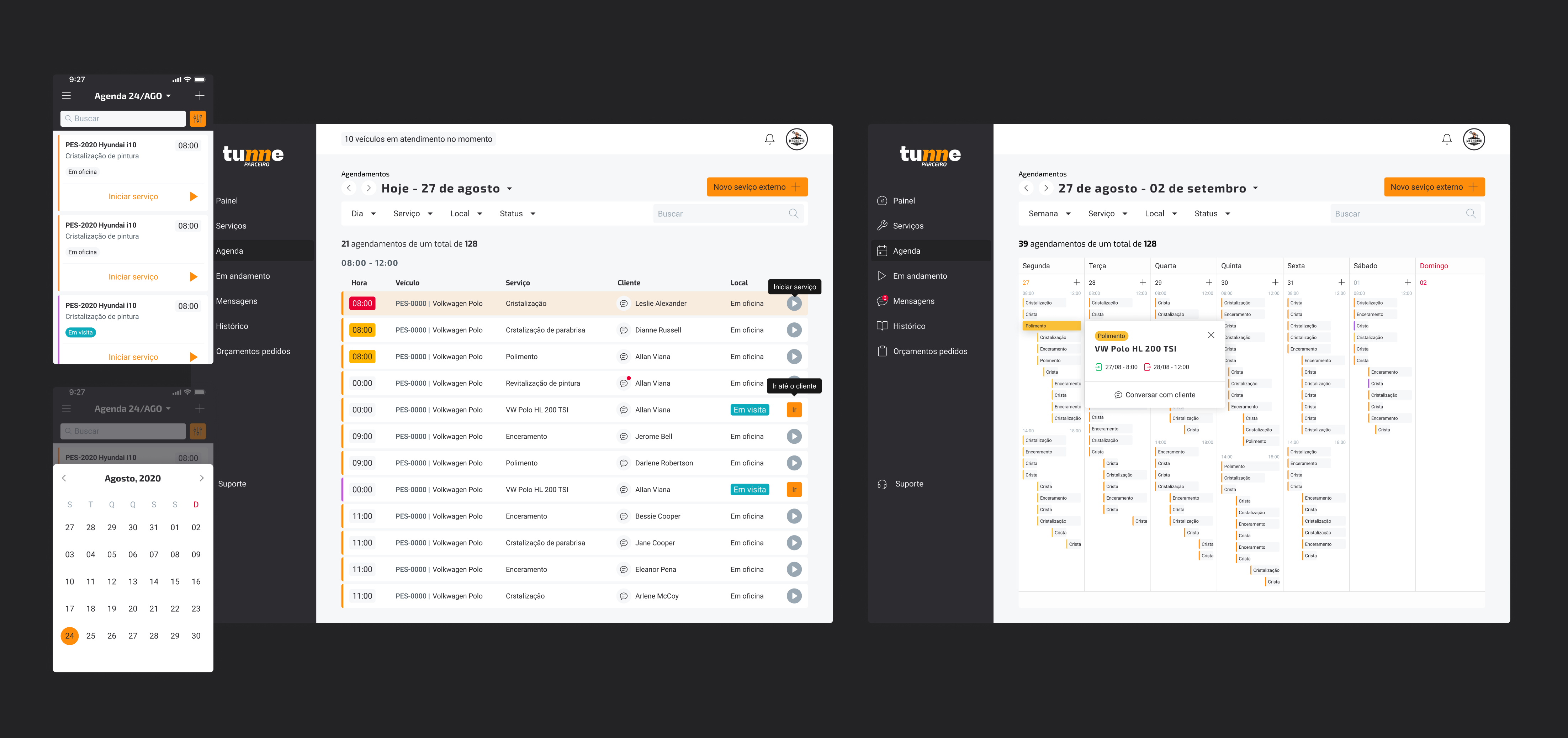
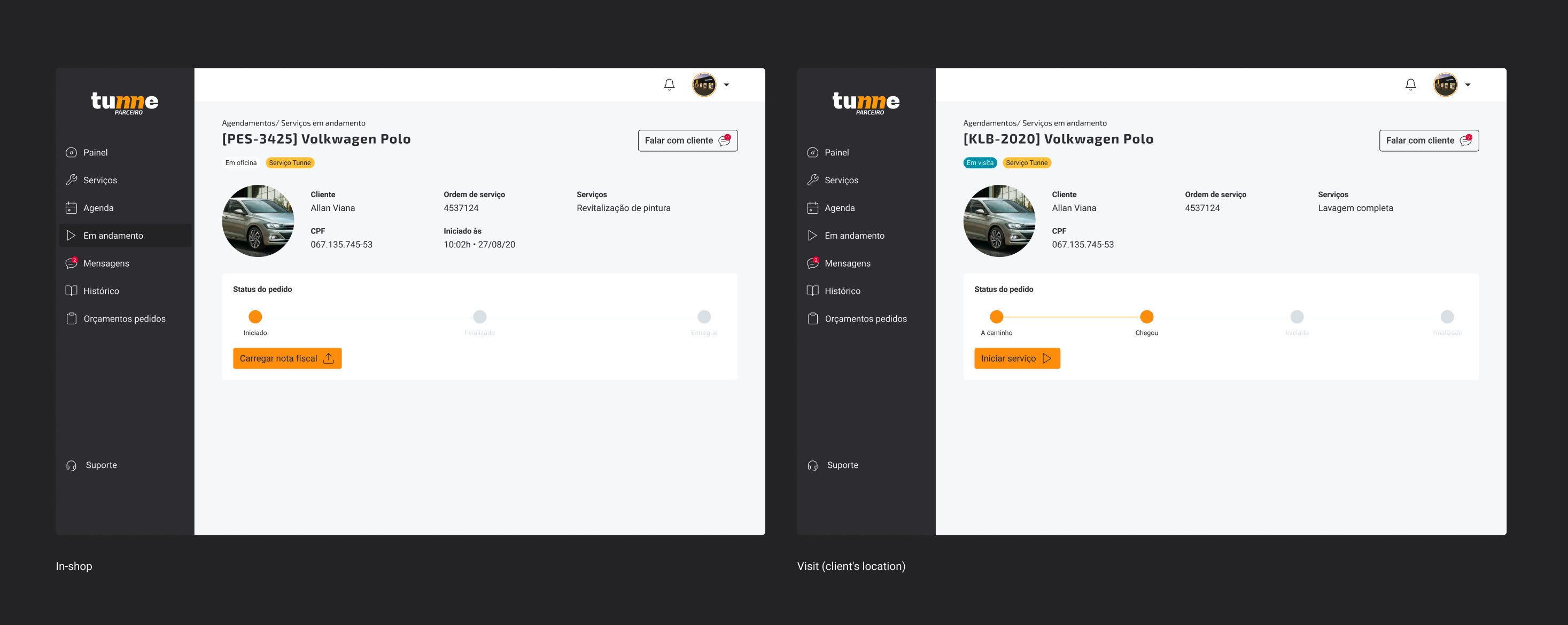
Ongoing Services
Every service that already started is presented on this page, where it's possible to updated service/car status, from receiving the car to returning it, which keeps the clients aware of the progress, triggering a notification on the Tunne Diver platform.
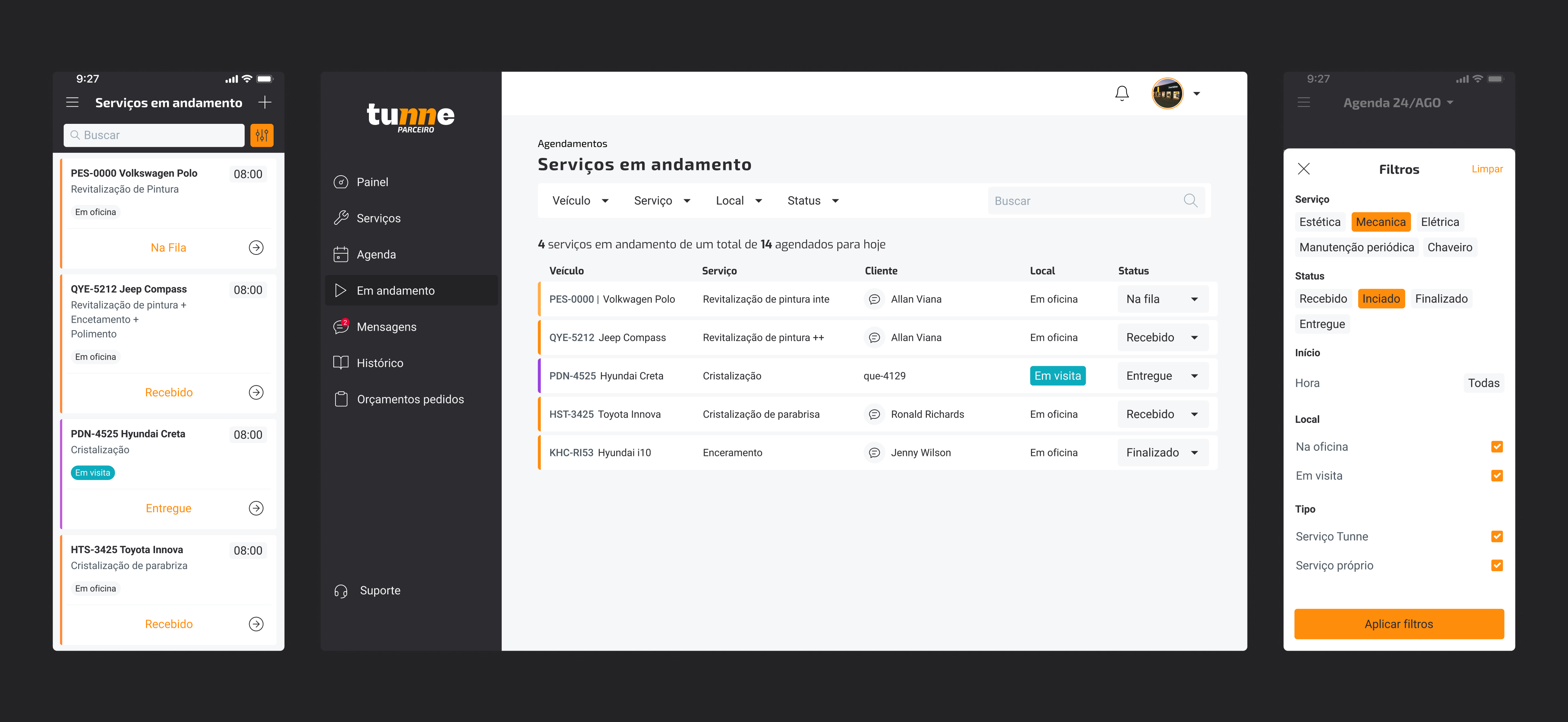
Chat and Support
Tunne platform was designed to be frictionless and as simple as possible, so all tasks are solved on both the Driver and Partner platform. But for edge cases, drivers and mechanics may need to contact, and that happens via chat.
Tunne Support manages the connection and helps both driver and partner to solve potential problems, making sure the service can be successfully finished.
